1-(2-Chlorophenyl)-2-thiourea
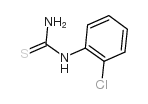
1-(2-Chlorophenyl)-2-thiourea structure
|
Common Name | 1-(2-Chlorophenyl)-2-thiourea | ||
|---|---|---|---|---|
| CAS Number | 5344-82-1 | Molecular Weight | 186.66200 | |
| Density | 1.441g/cm3 | Boiling Point | 293.1ºC at 760mmHg | |
| Molecular Formula | C7H7ClN2S | Melting Point | 144-149 °C | |
| MSDS | N/A | Flash Point | 131.1ºC | |
| Name | 1-(2-Chlorophenyl)-2-thiourea |
|---|---|
| Synonym | More Synonyms |
| Density | 1.441g/cm3 |
|---|---|
| Boiling Point | 293.1ºC at 760mmHg |
| Melting Point | 144-149 °C |
| Molecular Formula | C7H7ClN2S |
| Molecular Weight | 186.66200 |
| Flash Point | 131.1ºC |
| Exact Mass | 186.00200 |
| PSA | 70.14000 |
| LogP | 2.76880 |
| Index of Refraction | 1.727 |
Synonym: Section 2 - COMPOSITION, INFORMATION ON INGREDIENTS
Risk Phrases: 28 Section 3 - HAZARDS IDENTIFICATION EMERGENCY OVERVIEW
Very toxic if swallowed. Potential Health Effects Eye: May cause eye irritation. Skin: May cause skin irritation. May be harmful if absorbed through the skin. Ingestion: May be fatal if swallowed. May cause irritation of the digestive tract. Inhalation: May cause respiratory tract irritation. May be harmful if inhaled. Chronic: Not available. Section 4 - FIRST AID MEASURES Eyes: Immediately flush eyes with plenty of water for at least 15 minutes, occasionally lifting the upper and lower eyelids. Get medical aid immediately. Skin: Get medical aid immediately. Immediately flush skin with plenty of water for at least 15 minutes while removing contaminated clothing and shoes. Ingestion: Get medical aid immediately. Wash mouth out with water. Inhalation: Get medical aid immediately. Remove from exposure and move to fresh air immediately. If not breathing, give artificial respiration. If breathing is difficult, give oxygen. Notes to Physician: Section 5 - FIRE FIGHTING MEASURES General Information: As in any fire, wear a self-contained breathing apparatus in pressure-demand, MSHA/NIOSH (approved or equivalent), and full protective gear. Extinguishing Media: Use water spray, dry chemical, carbon dioxide, or chemical foam. Section 6 - ACCIDENTAL RELEASE MEASURES General Information: Use proper personal protective equipment as indicated in Section 8. Spills/Leaks: Vacuum or sweep up material and place into a suitable disposal container. Section 7 - HANDLING and STORAGE Handling: Do not breathe dust, vapor, mist, or gas. Do not get in eyes, on skin, or on clothing. Use only in a chemical fume hood. Storage: Store in a cool, dry place. Store in a tightly closed container. Poison room locked. Section 8 - EXPOSURE CONTROLS, PERSONAL PROTECTION Engineering Controls: Use adequate ventilation to keep airborne concentrations low. Exposure Limits CAS# 5344-82-1: Personal Protective Equipment Eyes: Not available. Skin: Wear appropriate protective gloves to prevent skin exposure. Clothing: Wear appropriate protective clothing to prevent skin exposure. Respirators: Follow the OSHA respirator regulations found in 29 CFR 1910.134 or European Standard EN 149. Use a NIOSH/MSHA or European Standard EN 149 approved respirator if exposure limits are exceeded or if irritation or other symptoms are experienced. Section 9 - PHYSICAL AND CHEMICAL PROPERTIES Physical State: Powder Color: white to tan Odor: Not available. pH: Not available. Vapor Pressure: Not available. Viscosity: Not available. Boiling Point: Not available. Freezing/Melting Point: 143 - 146 deg C Autoignition Temperature: Not available. Flash Point: Not available. Explosion Limits, lower: Not available. Explosion Limits, upper: Not available. Decomposition Temperature: Solubility in water: Specific Gravity/Density: Molecular Formula: C7H7ClN2S Molecular Weight: 186.66 Section 10 - STABILITY AND REACTIVITY Chemical Stability: Not available. Conditions to Avoid: Incompatible materials. Incompatibilities with Other Materials: Strong oxidizing agents, strong acids, strong bases. Hazardous Decomposition Products: Hydrogen chloride, nitrogen oxides, carbon monoxide, carbon dioxide, sulfur oxides (SOx), including sulfur oxide and sulfur dioxide. Hazardous Polymerization: Has not been reported Section 11 - TOXICOLOGICAL INFORMATION RTECS#: CAS# 5344-82-1: YS7100000 LD50/LC50: CAS# 5344-82-1: Oral, rat: LD50 = 4600 ug/kg. Carcinogenicity: 1-(2-Chlorophenyl)-2-thiourea - Not listed by ACGIH, IARC, or NTP. Other: See actual entry in RTECS for complete information. Section 12 - ECOLOGICAL INFORMATION Section 13 - DISPOSAL CONSIDERATIONS Dispose of in a manner consistent with federal, state, and local regulations. Section 14 - TRANSPORT INFORMATION IATA Shipping Name: TOXIC SOLID, ORGANIC, N.O.S.* Hazard Class: 6.1 UN Number: 2811 Packing Group: II IMO Shipping Name: TOXIC SOLID, ORGANIC, N.O.S. Hazard Class: 6.1 UN Number: 2811 Packing Group: II RID/ADR Shipping Name: TOXIC SOLID, ORGANIC, N.O.S. Hazard Class: 6.1 UN Number: 2811 Packing group: II USA RQ: CAS# 5344-82-1: 100 lb final RQ; 45.4 kg final RQ Section 15 - REGULATORY INFORMATION European/International Regulations European Labeling in Accordance with EC Directives Hazard Symbols: T+ Risk Phrases: R 28 Very toxic if swallowed. Safety Phrases: S 1 Keep locked up. S 28A After contact with skin, wash immediately with plenty of water. S 45 In case of accident or if you feel unwell, seek medical advice immediately (show the label where possible). WGK (Water Danger/Protection) CAS# 5344-82-1: No information available. Canada CAS# 5344-82-1 is listed on Canada's NDSL List. CAS# 5344-82-1 is not listed on Canada's Ingredient Disclosure List. US FEDERAL TSCA CAS# 5344-82-1 is listed on the TSCA inventory. SECTION 16 - ADDITIONAL INFORMATION N/A |
CHEMICAL IDENTIFICATION
HEALTH HAZARD DATAACUTE TOXICITY DATA
|
| Hazard Codes | T+:Verytoxic; |
|---|---|
| Risk Phrases | R28 |
| Safety Phrases | S45-S28A-S1 |
| RIDADR | 2811 |
| RTECS | YS7100000 |
| Packaging Group | II |
| Hazard Class | 6.1 |
| HS Code | 2930909090 |
|
~13% 
1-(2-Chlorophen... CAS#:5344-82-1 |
| Literature: THE BOARD OF TRUSTEES OF THE LELAND STANFORD JUNIOR UNIVERSITY; AUCKLAND UNISERVICES LIMITED Patent: WO2009/114552 A1, 2009 ; Location in patent: Page/Page column 141 ; |
|
~98% 
1-(2-Chlorophen... CAS#:5344-82-1 |
| Literature: Kodomari, Mitsuo; Suzuki, Masato; Tanigawa, Keiko; Aoyama, Tadashi Tetrahedron Letters, 2005 , vol. 46, # 35 p. 5841 - 5843 |
|
~% 
1-(2-Chlorophen... CAS#:5344-82-1 |
| Literature: Journal of the Chemical Society, , p. 3043 |
|
~% 
1-(2-Chlorophen... CAS#:5344-82-1 |
| Literature: Bioorganic and Medicinal Chemistry Letters, , vol. 15, # 23 p. 5211 - 5217 |
|
~% 
1-(2-Chlorophen... CAS#:5344-82-1 |
| Literature: Tetrahedron Letters, , vol. 50, # 20 p. 2407 - 2410 |
|
~10% 
1-(2-Chlorophen... CAS#:5344-82-1 |
| Literature: Uberhande; Thakare; Berad Journal of the Indian Chemical Society, 2010 , vol. 87, # 9 p. 1137 - 1141 |
|
~% 
1-(2-Chlorophen... CAS#:5344-82-1 |
| Literature: Bioorganic and Medicinal Chemistry Letters, , vol. 11, # 7 p. 915 - 918 |
|
~% 
1-(2-Chlorophen... CAS#:5344-82-1 |
| Literature: Bioorganic and Medicinal Chemistry Letters, , vol. 20, # 3 p. 1177 - 1180 |
| Precursor 5 | |
|---|---|
| DownStream 10 | |
| HS Code | 2930909090 |
|---|---|
| Summary | 2930909090. other organo-sulphur compounds. VAT:17.0%. Tax rebate rate:13.0%. . MFN tariff:6.5%. General tariff:30.0% |
| 1-(2-Chlorophenyl)thiourea |
| EINECS 226-291-6 |
| (2-chlorophenyl)thiourea |
| MFCD00004934 |
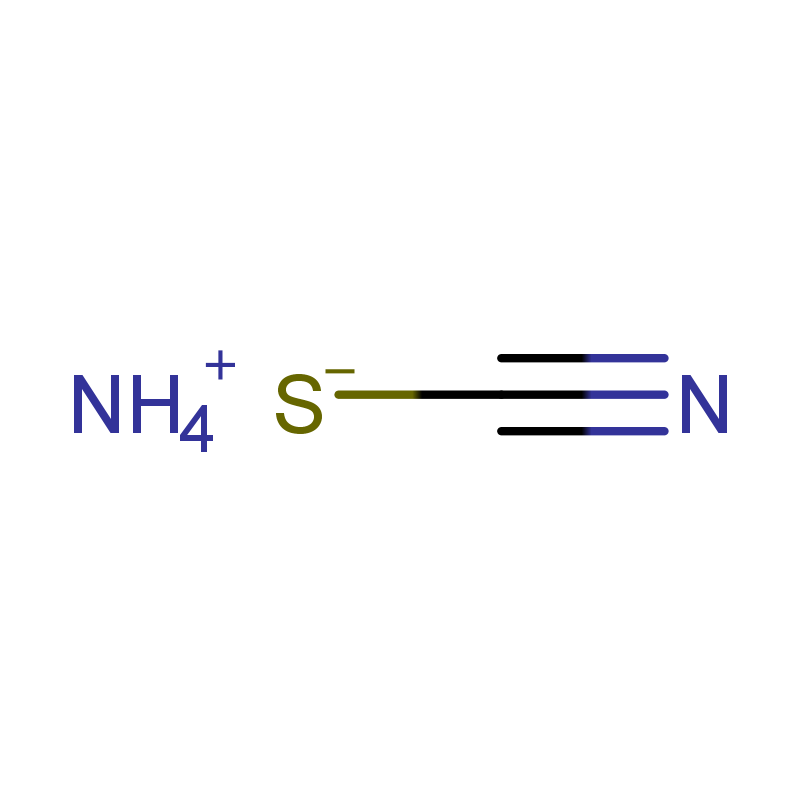
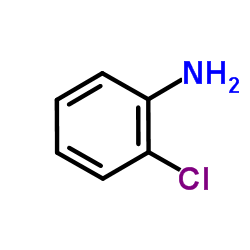
![Benzamide, N-[[ (2-chlorophenyl)amino]thioxomethyl]- structure](https://image.chemsrc.com/caspic/496/21258-05-9.png)
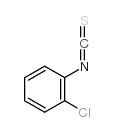
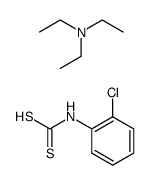
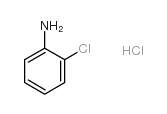
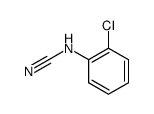
 CAS#:27058-83-9
CAS#:27058-83-9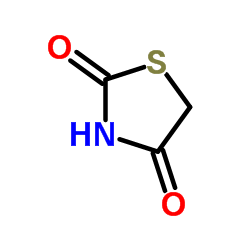 CAS#:2295-31-0
CAS#:2295-31-0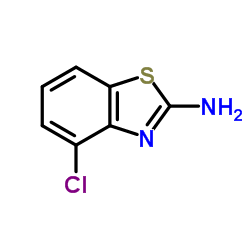 CAS#:19952-47-7
CAS#:19952-47-7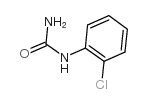 CAS#:114-38-5
CAS#:114-38-5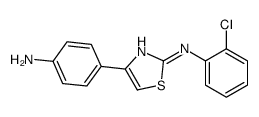 CAS#:75876-62-9
CAS#:75876-62-9 CAS#:76462-11-8
CAS#:76462-11-8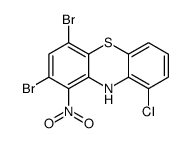 CAS#:76462-13-0
CAS#:76462-13-0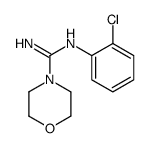 CAS#:88897-56-7
CAS#:88897-56-7 CAS#:89069-99-8
CAS#:89069-99-8
